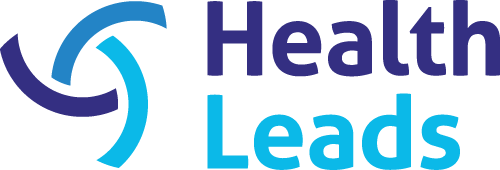Why ‘Small Data’ is Key to Community Health

Health systems generate a wealth of data on patients and population health. While this data can be a powerful tool for organizational decision-making, performance management and innovative research, there is no shortage of ways this information can be squandered or misused. Any organization that works to address community-level health inequities must think seriously about how to ensure data are not only mission-aligned, but actually build the kind of shared power needed to achieve health goals. And in these situations, ‘Small Data’ can be just as important — if not moreso — than the Big Data we hear about so frequently in the media.
WHAT SMALL DATA IS
Coined by MIT Media Lab researcher & Assistant Professor of Civic Media and Data Visualization at Emerson College, Catherine D’Ignazio, “small data” is a participatory, equitable approach to data and analytics that enables community members to be the key owners and decision-makers around their data — ensuring information is used to serve the needs of those it is drawn from. The name is a play on “Big Data,” which requires specialized, complex computer science and statistical skills to analyze, often relies on opaque processes and tends to leave out the people the data is referencing.
Traditionally, data has been largely inaccessible to the public because it is either A) privately held by powerful entities such as governments and corporations; and/or B) inaccessible because working with the data has required a specialized technical skillset. In either case, decisions about how the data is used and interpreted are often left to researchers and analysts. By comparison, a small data approach challenges traditional power dynamics — allowing community members to not only own their data, but to more closely control its use and interpretation as well.
A small data approach requires us to ask critical questions about data use and collection: Whose stories does the data center on? How does that data reflect the individuals involved? And who decides how the stories are told or data is shared?
Small data approaches can be applied to many applications of data — including research and insight generation, performance measurement, quality improvement and decision-making.
WHAT SMALL DATA IS NOT
Small data is not necessarily limited to small datasets. Despite what the name suggests, small data approaches can use medium or even large datasets. Smaller datasets — like plotting a single variable over time — are certainly easier to work with, especially for those who are newer to data analysis. But with the right tools and processes in place, community members can work with and interpret larger, more complex data sets when needed.
Small data is not just numbers. Of course, data can be numbers. But it can also include geographic information displayed on maps, qualitative information collected through interviews, surveys, stories, even photos. These approaches create multiple pathways for participation in data collection and analysis — and can enable community members to represent themselves within the data, providing deeper context and meaning.
Small data does not imply a lack of rigorous methodology or complex analytic techniques. Using simple methods also does not mean there aren’t best practices associated with our methods. And although we want to use the simplest approach possible, we also want to provide solutions that matches the needs of a community. That may require training people in a specific method ahead of the project, or it may mean resourcing a data scientist or other technical expert to execute on an analysis that requires more specialized skills. In either case, the goal is to ensure that analytic protocol design, methodological tradeoffs/limitations and outputs are clearly communicated to community members.
SMALL DATA IN ACTION
![]() Collaborative Cottage Grove is a multi-sector, resident-led effort designed to improve community health in Greensboro, NC. Anchored by Cone Health, the collaborative includes the Greensboro Housing Coalition, Guildford County Dept of Health & Human Service, UNC Greensboro and residents from the Cottage Grove neighborhood. The All In: Data for Community Health podcast recently shared how the collaborative worked together address high childhood asthma rates in the neighborhood:
Collaborative Cottage Grove is a multi-sector, resident-led effort designed to improve community health in Greensboro, NC. Anchored by Cone Health, the collaborative includes the Greensboro Housing Coalition, Guildford County Dept of Health & Human Service, UNC Greensboro and residents from the Cottage Grove neighborhood. The All In: Data for Community Health podcast recently shared how the collaborative worked together address high childhood asthma rates in the neighborhood:
- County-level data was obtained through the Dept of Health & Human Services;
- Community members shared concerns over housing conditions that affect asthma and identified priority actions;
- Cone Health analyzed patient data on pediatric emergency room visits tied to asthma.
Through this process, a single apartment complex was identified as a hotspot — and quantitative data was combined with resident stories to build the case for the city to force significant improvements to the housing conditions. This process would not have been possible without investing time into relationship- and trust-building between residents and organizational stakeholders.
![]() In partnership with the New York State Department of Health, Health Leads and the Robin Hood Foundation, community health workers at NYC Health + Hospitals have led a data collection effort on patient enrollment and referrals to Supplemental Nutrition for Women Infants & Children programs (WIC). These front-line workers documented patients’ stories regarding barriers to WIC access and harnessed those stories to identify several contributors to known enrollment drop-off points. These insights have supported operational and policy changes that stand to improve access to WIC benefits statewide.
In partnership with the New York State Department of Health, Health Leads and the Robin Hood Foundation, community health workers at NYC Health + Hospitals have led a data collection effort on patient enrollment and referrals to Supplemental Nutrition for Women Infants & Children programs (WIC). These front-line workers documented patients’ stories regarding barriers to WIC access and harnessed those stories to identify several contributors to known enrollment drop-off points. These insights have supported operational and policy changes that stand to improve access to WIC benefits statewide.
SMALL DATA CAN ADVANCE SHARED COMMUNITY GOALS
Small data approaches certainly aren’t the way institutions have traditionally collected and used data — and it will take time, capacity-building and overcoming a learning curve for most teams to find success. But by directly engaging people who are represented in collected data — and in the analytic and decision making-process that ensue — health systems can create stronger alignment with community priorities, generate deeper insights into the data through expert lived experience, and focus on solutions that are most meaningful to communities.
Equally important, health system partnerships offer local residents and community-based organizations access to technology and data that would not otherwise be available. These mutually-beneficial relationships strengthen understanding of health-related problems in our communities — and use the resulting data to advance shared goals.
Stay tuned for additional resources on ‘small data’ in the coming weeks, including a downloadable cheat sheet on key elements that make this approach successful!




